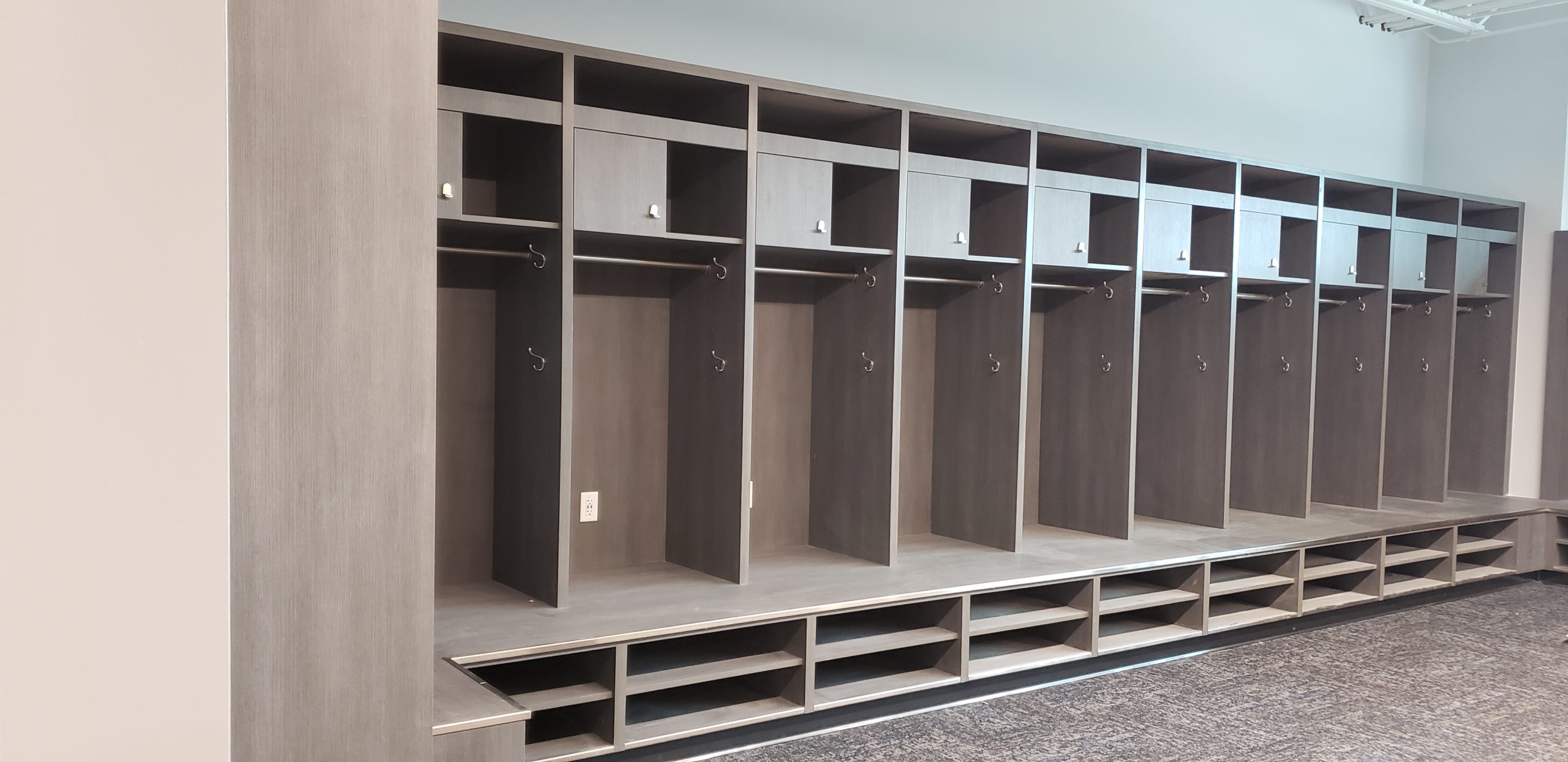Over the past six months, COVID-19 has significantly impacted day-to-day operations in the entertainment & hospitality industry. Recreation facilities, restaurants, hotels and themed entertainment venues have had to limit capacity and work quickly to implement new policies, to ensure guest safety without drastically altering the guest experience.
In our previous expert article piece, Entertainment & Hospitality: 2021 Design Trends, we reviewed several design considerations to address in entertainment venues over the next year. Here, we begin to explore how these design strategies can be applied specifically within Sporting Venues.
Spaces to Consider:

Entrances
Entrance spaces at stadiums will see a variety of changes moving forward in 2021. Many stadiums may incorporate visual signage to promote overall good hygiene in the stadium and encourage frequent handwashing/sanitizing. Sporting event attendees may be subject to psychological considerations including temperature checks upon entry. In addition to temperature monitoring, signage at entrance points may inform guests on PPE requirements or recommendations.
Ticket Booths + Security
Guests may be encouraged to purchase tickets online in advance to reduce face-to-face contact with employees. Ticket booths at the stadium may incorporate plexiglass barriers to separate staff from fans. Fans may also be encouraged to use cashless, touch-free payment options when purchasing tickets. Visual cues such as floor markers may be added at entrance gates where lines will form to encourage guests to stay six feet apart while waiting in line. Prior to arriving at the game, guests may be encouraged to bringing minimal personal items to keep the line moving smoothly through security checks. Stadiums should enact effective sanitation processes
Credit machines and ATM’s should be cleaned frequently, and sanitizing stations should be provided nearby for guests. Parks should also enact effective sanitation processes using effective chemicals for high-touch surfaces such as counters at ticket booths and tables used for personal items at security checkpoints.
Stairwells + Elevators
According to the National Football League, a majority of football game attendees arrive approximately 30 to 90 minutes prior the start of a game. To accommodate the admission of a high volume of guests during these time periods, stadiums may consider adding additional entrance points to move guests into the stadium quickly while following proper social distancing guidelines. Venues may also consider adding additional stairwells to create one-directional stairwells to assist with the flow of foot traffic. Signage may be placed outside of elevators to advise of updated elevator capacity required to allow for distancing, and high-touch surfaces such as elevator buttons should be sanitized frequently.

Concessions
Concession stands and dining venues in sporting venues and professional stadiums will see a variety of changes implemented as they begin to reopen. Individual concession areas may be spaced out further than they have been in the past to prevent overcrowding in specific areas of the stadium. Additionally, floor and wall markers may be used to provide visitors with a visual representation of six feet of distance when waiting in line to make purchases. These venues may also remove self-serve options such as condiments and provide customers with one time use packets. Additional barriers such as plexiglass may be incorporated into concession areas to limit contact between employees and customers. These venues may also encourage touchless pay options to avoid cash handling and provide hand-sanitizer stations nearby. High-touch areas such as card readers and order counters should be sanitized frequently.
Stadiums should also ensure that their ventilation systems increase circulation of outdoor air as much as possible in interior spaces, including guest lounges, concession areas and restrooms. When reopening, they should also ensure all water systems are safe to use if the facility has had a prolonged shutdown. Drinking fountains should also be sanitized often.
Mask Free Zones
As many stadiums require guests to mask-up, we are seeing an increase in designated mask-free zones, where guests who are required to use PPE for long periods of time can take a break. These relaxation spaces are typically outside zones, where individuals can remove their masks and take a break in shaded, well-ventilated areas.

Seating
In existing facilities, stadium seating should be adjusted to provide adequate spacing between groups to allow for social distancing. In new facilities, rather than placing stadium seating in rows with little to no distancing, consider alternative design options. Future design may include clustered group seating for groups of two, four, six etc. with six-feet of separation between each seating cluster.
Seating should also be considered at bars, in dining spaces and lounges within athletic stadiums. Consider removing every other high-top bar seat or stool to allow for additional distancing between guests. Tables for dining should be spaced apart appropriately, and additional outdoor dining seating may be considered. In lounges, consider replacing cloth furniture with easily cleanable/wipeable materials such as leather. Lounges may also replace “group style” seating such as couches or loveseats with individual seating options.

Restrooms
Stadiums may consider adding restrooms in high-volume areas to allow for additional social distancing between guests utilizing the restroom facilities. Automated features should be incorporated into restrooms including automatic flush toilets, automated soap disposal, automatic sensor sinks, and automatic paper towel dispensers/hand-drying units. High-touch areas in restrooms such as toilet seats and baby changing stations should be sanitized frequently. Stadiums may also incorporate hand sanitizing stations near restroom exits.

Locker Rooms
Although a majority of adjustments in stadiums will help keep fans safe, accommodations will need to made for players and coaches as well. Venues should increase sanitizing and cleaning in the locker rooms. Locker rooms should also provide individual storage spaces for player’s personal items and apparel, to prevent the spread of germs. Coaches should encourage the use of dedicated personal equipment including bats, mitts, rackets, etc. Players should be advised not to share water bottles, community snacks or towels. Signage may be incorporated into the locker rooms to remind players of good hygiene practices and to advise on areas where PPE such as masks may be required.
The Takeaways
We have identified six key takeaways that can be implemented now. Some of the most
cost-effective design trends we are recommending to our clients include:
Distance: create space for six feet per person
Equipment: provide PPE for stadium employees, coaches and players.
Cues: add visual cues throughout to promote best practices.
Circulation: consider creating additional entry points to help with the flow of foot traffic during busy entry periods.
Hygiene: increase sanitation of restrooms and frequently touched surfaces.
Technology: use technology to supplement your defenses. What types of technology have you already incorporated in your sports venue? What methods can you continue to explore?





